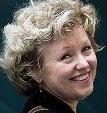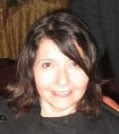Part II of a series
Noted in the last blog, Annie Nakamura’s last request was to be buried either on Hurricane Ridge, Olympic National Forest in Washington or at Anza Borrego Desert. Four intrepid road warriors took to the road on a crystal clear blue-sky Saturday morning, October 8, 2011, in our trusty Nissan Altima.
The plan: Drive north to the Olympic National Forest, swing back down to San Francisco, return to San Diego via the coast.
Time frame: Olympic National Forest by Tuesday, October 11th; Hurricane Ridge on Wednesday; head south to reach San Francisco by Friday, October 14th. Reason for the rush? We needed to be in San Francisco for a burial and ceremony on Saturday, October 15th.
Day 1, Saturday, October 8th: After a round of picture-taking, we headed north on Interstate 395; first stop: Temecula for lunch. Back on 395, we drove through a stunningly beautiful upper-desert day to Randsburg and stopped for a quick tour of Manzanar, (site of the former World War II Japanese Internment camp) leaving a small paper crane in each spot. Our first night is Bishop.
Day 2, Sunday, October 9th: We stop at the Mammoth Loop, and amid snow covered ground, we take Annie’s urn for a round of pictures and leave a commemorative crane. Our intended stop is Mono Lake to see “tufas”—limestone columns created by the precipitation of carbonate minerals from the lake. Kawa is delighted to use her “senior” national park membership, and we trek down the walkway to the lake. It is a magnificent shade of blue, and the tufas jutting out from the water creates an almost other-worldly scene.
Another scheduled stop is Reno. In 1980, Don and I eloped in Reno at the “Heart of Reno” Chapel. Years earlier, Annie tried to convince us to take a “wedding party” back to the Heart of Reno to “renew our vows.” We go searching to find the chapel only to learn that it now a parking lot. Kawa and Janet doubt the authenticity of our marriage. Not to be deterred, we stand in the location with Annie in hand and take pictures and leave a crane.
Day 3, Monday, October 10th: Having spent the night in Alturus, one of our goals is to travel to Crater Lake. Along the way, we stop at Tule Lake, the largest World War II Japanese Internment camp. Little did we imagine that this road trip would also be a Japanese Internment Camp tour.
It is another beautiful day, but as we near Crater Lake, Kawa mentions that on previous road trips, Annie was only able to see the lake once. As we wend our way to the top, the fog rolls in, the ambient temperature drops to 41 degrees, snow is on the ground, the wind howls, and the rain begins to pour down. At the visitor’s center, we brave the elements to find the spot where Annie, Kawa, and another friend, Julie, had taken pictures so that we, too, can commemorate “another typical Annie Nakamura Crater Lake moment.” The wind is so fierce that Janet’s flimsy olive drab poncho billows wildly with each gust so much so that Don has to virtually carry her back to the car. With teeth chattering, we begin the descent. At Discovery Point, there is a momentary clearing; we pull over, and we can actually see some waves on the lake. We scatter a few ashes—our first, say a few words, and leave a crane.
Day 4, Tuesday, October 11th: We spend the night in Salem, outside of Eugene, and continue the journey. We stop at the Chehalis Tribe casino in Rochester. There we find a perfect basket for Annie’s ashes. Made by Cindy Andy, a Chehalis tribe weaver, it is a basket woven out of sweet grass with a whale design. As we leave with the basket, it begins raining, and the sky is filled with a beautiful rainbow—we take it as a positive omen.
That evening, we arrive at the Olympic Lodge in Point Angeles, gateway to the Olympic National Forest. It is a beautiful, four-star hotel with magnificent views of the area. That evening, we prepare the burial basket.
Day 5, Wednesday, October 12th: The skies have clouds, but patches of clear blue are visible—NO rain! At 7:30 AM, we commence our tip to Hurricane Ridge. Along the way, we stop to take pictures of the breathtaking views of pine trees, water, and skies filled with clouds; mists float amongst the pines. As we ascend, more and more snow is evident so much so that by the time we reach Hurricane Ridge Visitor’s Center, visibility is virtually nil, temperatures are a chilly 32 degrees, and we wonder if we can make it to the parking loop. As we crawl up the road, we make it to the loop, although two cars are parked, no one is in sight. We wander into the center cluster of trees; Don makes one attempt at digging amongst the pines but soon encounters too many roots to continue. We wander off to the left to discover a small meadow that has a view of the trails, water, and mountains. Don digs; Kawa assists. I set up the altar. It is so cold that Janet’s teeth are literally chattering. We place Annie in the grave; each of us throws a bit of dirt; say a few words. A sense of satisfaction prevails.
We begin our journey south.
Day 6, Thursday, October 13th: After spending the night in Eugene, one of our designated stops is Bandon, Oregon where Annie raved about the cranberry candy she once had. We find the store, and our homage is to purchase the cranberry jells, leave a crane, and head for Port Orford and Redwood.
Day 7: Friday, October 14th: Driving through the Avenue of the Giants, we decide to leave some of Annie in the magnificent redwood forest. We find a hollowed out tree, set up an altar, scatter ashes, and revel in the beauty of the majestic trees.
On our way to Fort Bragg, we meet a fellow sojourner at a scenic view, who is also on a journey of memory. VR lost his wife and after scattering her ashes off Wind ‘N Sea in La Jolla, he decided to journey north to leave her wedding ring among the sequoias. We relate our tale of friendship and fulfilling final requests. A crane is left.
We arrive in San Francisco.
To be continued.
Judith Liu
January 13, 2012
Friday, January 13, 2012
Subscribe to:
Post Comments (Atom)












0 comments:
Post a Comment